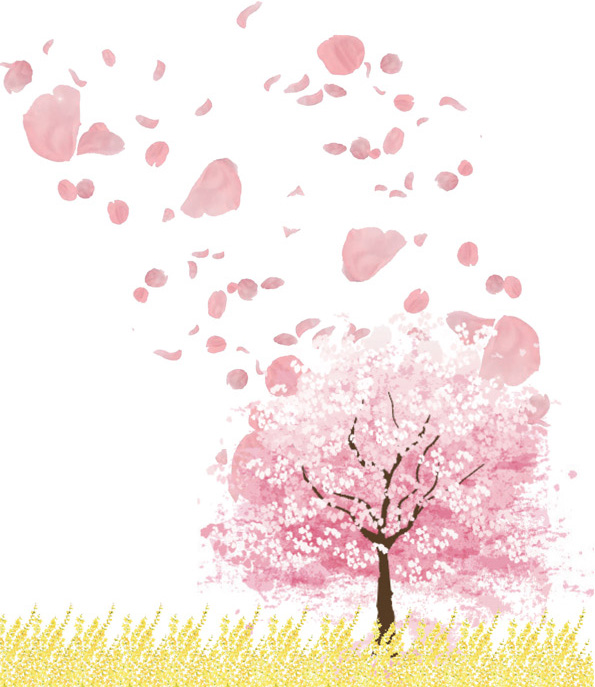
Cherry blossoms are pink or white flowers that bloom in the spring, and they represent beauty and purity in the language of flowers. Even though cherry blossoms are easily blown away by weak winds, they are loved by many people because the fluttering cherry blossoms are very beautiful. Unlike cherry blossoms, however, cherry trees have the powerful ability to survive, so people used cherry trees to make the printing woodblocks of Tripitaka Koreana. A cherry is usually smaller than 10 mm and will turn black when cooked. However, the wild cherries and cherries sold at markets are different. The cherries we often eat are American cherries, which are bred as fruit.
Where do cherry trees grow? Many people think the cherry blossom is the national flower of Japan. However, the symbol of Japan is the Chrysanthemum Morifolium, and there is no national flower of Japan set by law. In other words, the cherry blossom is not the national flower of Japan.
Different species of cherry trees are found in many countries, including India, Korea and Japan. One of these trees is from Jeju Island, and its name is the Jeju-Prunus Yedoensis. Currently, most cherry trees in Korea are of the Jeju Island variety or the Japanese variety. The difference between Japanese cherry trees and Jeju cherry trees is that the former doesn’t have a known origin but the latter does. There was a controversy about whether Japanese cherry trees came from Jeju Island. However, in 2007, the U.S. Department of Agriculture(USDA) said that they are not the same species.
Why does Korea have so many cherry trees? The main reason is that Japanese immigrants planted cherry trees in order to create the familiar environment of Japan in Korea during the period of Japanese colonial rule in 1919. There are many rumors about this. The rumors are that the Japanese people planted cherry trees in Changgyeonggung Palace in order to distract Koreans from the ‘March 1 Independence Movement’. Changgyeonggung Palace, which was used as the king’s residence, became Changgyeongwon Garden, and it was a garden for seeing cherry blossoms. There are no records saying the Japanese people meant to destroy the spirit of the people. Most importantly, cherry trees were planted around the Japanese residential areas. The public viewings of the cherry blossoms in Changgyenggung Palace became the cherry blossom festival we have enjoyed in the spring since 1924.
Currently, there are more than 10 Cherry Blossom Festivals all around Korea. Also, many countries hold festivals in spring every year. Domestic Cherry Blossom Festivals have regional characteristics. The Cherry Blossom Festival in Seokchon Lake in Seoul features more than 1,000 cherry trees. Additionally, cherry blossoms are harmonious with the natural environment of the Seokchon Lake. There are various activities and games, and that is why more than 600,000 people visit there every year. The Jeju-Prunus Yedoensis Festival is a sign of the first blooming of cherry blossoms in Korea.
Among the Cherry Blossom Festivals held overseas, there is the Washington D.C. Cherry Blossom Festival. Its origin goes back to 1912. The mayor of Tokyo gave more than 4,000 cherry trees to William Taft as an admission of the Japanese invasion of Korea. The Washington D.C. Cherry Blossom Festival is sponsored by Japanese companies and has a number of diverse events related to Japanese culture, as well as cherry blossom parades and fireworks. The festival shows the beauty of cherry blossoms to Americans. This year, the Washington D.C. Cherry Blossom Festival celebrates its 105th anniversary, and about 1.5 million tourists visit annually.
The beautiful cherry blossoms survived historical conflicts and ideologies in several countries, including Korea and Japan. However, we can overcome political and cultural differences and enjoy the cherry blossom festivals. This spring, I hope all readers make special memories or have romantic dates, like the cherry blossoms that are falling but beautiful.
By Kim Jae-wan l jw37@cbnu.ac.kr
By Jung Jun-hoe l jjh38@cbnu.ac.kr



 All
All Culture
Culture






 Kim Jae-wan & Jung Jun-hoe
Kim Jae-wan & Jung Jun-hoe











